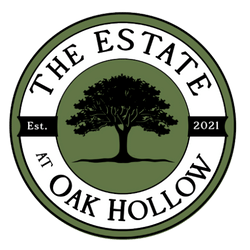How to Plan an Effective Sales Meeting
Sales meetings play a crucial role in the success of any sales team. These meetings serve as a platform for aligning strategies, sharing information, and motivating team members. Business planning and executing effective meetings can enhance communication, boost productivity, and drive revenue growth. This guide will explore the critical steps on how to plan an impactful sales meeting and how to lead a meeting effectively that yields positive outcomes.
Understanding the Importance of Sales Meetings
Sales meetings provide a dedicated space for sales teams to come together, exchange ideas, and collaborate. They offer an opportunity to discuss sales ideas, and strategies, address challenges, and provide valuable training and guidance to team members. These meetings also serve as a platform for recognizing and rewarding achievements, fostering team spirit, and reinforcing the sales culture within an organization. By conducting regular and well-organized sales meetings, businesses can ensure that their sales team remains focused, motivated, and equipped to achieve their targets.

Defining the Goals and Objectives
Before planning a meeting, clearly defining the goals and objectives you wish to achieve is essential. This will help you structure the meeting agenda and ensure it aligns with your desired outcomes. Some standard plans for sales meetings include:
1. Providing updates and sharing information: It is an excellent opportunity to disseminate essential updates, such as changes in product offerings, pricing, or marketing strategies. It allows the entire sales team to stay informed and on the same page.
2. Reviewing performance: It can be used to analyze the team's performance, assess individual sales metrics, and provide feedback on improvement areas. This evaluation helps identify strengths, weaknesses, and areas for development.
3. Offering training and development: It can incorporate training sessions to enhance the skills and knowledge of the sales team. It can cover topics such as effective sales techniques, objection handling, or product knowledge to empower the team with the tools they need to succeed.
4. Setting goals and targets: It provides an opportunity to set specific goals, marks, and timelines for the sales team. This helps create a sense of purpose and direction, motivating the team to strive for excellence.
5. Celebrating achievements:
Recognizing and celebrating the accomplishments of individual sales representatives or the team is an essential aspect of sales meetings. Acknowledging successes boosts morale, fosters a positive work environment, and encourages continued high performance.
Preparing for the Sales Meeting
Researching the Audience and Participants: Conduct thorough research on the audience and participants before the meeting. Understand their backgrounds, roles, and interests to tailor the content and discussions accordingly. This will give you ideas on how to run a sales meeting and help you engage them effectively and address their specific needs.
Setting the Agenda and Topics: Create a well-structured agenda that outlines the topics and activities for the meeting that will generate out-of-the-box ideas. Prioritize the most necessary items and allocate sufficient time for each. Ensure the agenda covers the defined goals and objectives for a productive meeting.
Identifying the Key Takeaways: Determine the key takeaways you want attendees to leave the meeting with. These could be specific action items, strategic insights, or new knowledge. Clearly articulate and communicate these takeaways during the session to ensure everyone understands the expected outcomes.
Selecting the Right Venue and Logistics
Choosing the Appropriate Location: Select a venue that suits the size and requirements of the meeting. Consider factors such as accessibility, parking facilities, and the overall ambiance. The location should be conducive to productive discussions and comfortable for participants.
Arranging Audio-Visual Equipment and Technology: Ensure the venue has audio-visual equipment, such as projectors, screens, and microphones. Test the technology in advance to avoid any technical glitches during the meeting. Additionally, provide any required materials or handouts to enhance the participants' experience.
Organizing Refreshments and Facilities: Plan appropriate refreshments, such as snacks, beverages, or meals, based on the meeting's duration and timing. Consider any dietary restrictions or preferences of the attendees. Additionally, ensure the venue provides necessary facilities like restrooms and seating arrangements to ensure attendees' comfort.
By adequately preparing for the meeting and selecting the right venue and logistics, you can create an environment that fosters engagement, productivity, and a positive experience for all participants.
The Estate at Oak Hollow
When considering the right venue for your sales meeting, The Estate at Oak Hollow offers the following compelling reasons to make it your top choice:
- Captivating Natural Surroundings: The property's stunning natural surroundings create an inspiring ambiance that enhances creativity and focus during your meeting.
- State-of-the-Art Meeting Spaces: The Estate at Oak Hollow provides state-of-the-art meeting spaces with modern audio-visual technology, ensuring seamless presentations and engaging discussions.
- Flexible Accommodations: The venue offers spacious meeting rooms that accommodate groups of various sizes, providing flexibility for your gathering.
- Serene Outdoor Spaces: The beautifully landscaped grounds and outdoor areas at The Estate at Oak Hollow offer opportunities for team-building activities and networking in a tranquil and picturesque setting.
- Exceptional Services: The Estate at Oak Hollow goes the extra mile by arranging audio-visual equipment and technology to facilitate effective presentations and organizing refreshments and facilities to ensure a seamless and enjoyable experience for your meeting.
Choose The Estate at Oak Hollow as your preferred location and enjoy the remarkable features and amenities that make it an ideal venue for a successful and memorable meeting.
Inviting Participants and Confirming Attendance
Crafting Engaging Invitations: Create compelling invitations that communicate the purpose, date, time, and location of the meeting. Highlight the benefits of attending and use persuasive language to generate interest among participants.
Utilizing Reminder Strategies: Send timely reminders to participants closer to the meeting date. Utilize various communication channels such as email, calendar invites, or mobile notifications to ensure attendees are well-informed and prepared.
Managing RSVPs and Confirmations: Efficiently track RSVPs and manage attendee confirmations. Follow up with non-respondents to ensure an accurate headcount and make necessary adjustments to the meeting arrangements.
Designing the Sales Meeting Agenda
Structuring the Meeting Flow: Use the sales meeting agenda template and organize the agenda logically, ensuring a smooth transition between topics. Start with an engaging opening, cover essential points in the middle, and conclude with a clear call to action or summary.
Allocating Time for Each Agenda Item: Assign appropriate time slots for each agenda item to maintain a balanced meeting schedule. Allocate more time for crucial discussions and prioritize agenda items based on importance and relevance.
Incorporating Team Building and Icebreaker Activities: Include team building and icebreaker activities to foster a positive and collaborative environment. These activities can help break the ice, energize participants, and strengthen team dynamics.
Incorporating Engaging Presentation Techniques
Utilizing Visual Aids and Multimedia: Enhance presentations with visual aids and multimedia, such as slides, charts, and videos, to convey information effectively and engage participants visually.
Encouraging Interaction and Participation: Promote active participation through Q&A sessions, group discussions, and polls, encouraging attendees to share thoughts, ask questions, and provide input.
Practicing Effective Public Speaking: Develop strong public speaking skills by speaking, maintaining eye contact, and using gestures confidently. Utilize storytelling techniques to make the content relatable and memorable.
Training and Preparing Sales Team Members
Conducting Pre-Meeting Training Sessions: Organize training sessions before the meeting to equip team members with product knowledge, sales techniques, and industry updates, enhancing their readiness for client interactions.
Addressing Potential Challenges and Objections: Prepare team members to handle objections effectively by discussing strategies and providing appropriate responses and solutions.
Role-playing and Mock Scenarios: Engage in role-playing exercises and mock scenarios to refine communication skills, objection handling, and overall sales approach.
Integrating Sales Strategies and Best Practices
Reviewing Past Performance and Metrics: Evaluate past performance and metrics to identify areas of improvement and track progress toward goals. Analyze sales data to gain insights into what strategies have worked well and identify areas for refinement.
Introducing New Sales Techniques: Stay updated with the latest sales techniques and industry trends. Introduce innovative approaches to sales during the meeting, incorporating proven strategies to adapt to changing customer preferences and market dynamics.
Sharing Success Stories and Case Studies: Share success stories and case studies to inspire the sales team. Highlight real-world examples of successful sales engagements, showcasing best practices and demonstrating the effectiveness of specific strategies.
Leveraging Technology for Enhanced Sales Meetings
Using Sales Enablement Tools: Leverage sales enablement tools to streamline and enhance the sales process. Utilize tools for content management, customer relationship management (CRM), and sales analytics to empower the team with the right resources and insights.
Implementing Virtual and Hybrid Meeting Solutions: Embrace virtual and hybrid meeting solutions to overcome geographical constraints and engage remote or dispersed teams. Utilize video conferencing platforms and collaborative tools to facilitate effective communication and collaboration.
Analyzing Data and Analytics for Improvement: Utilize data and analytics to gain valuable insights into sales performance. Analyze metrics such as conversion rates, customer behavior, and sales pipeline to identify areas for improvement and make data-driven decisions.
Emphasizing Follow-Up and Action Items
Summarizing Meeting Highlights and Decisions: After the meeting, summarize the key highlights and decisions made during the session. This helps reinforce understanding and serves as a reference for future actions.
Assigning Responsibility and Accountability: Assign responsibilities for follow-up actions to specific team members. Ensure that each individual understands their role and the tasks they need to complete, fostering accountability within the team.
Setting Up a Timeline for Follow-Up Activities: Establish a timeline for completing follow-up activities and achieving desired outcomes. Communicate deadlines to ensure timely execution of tasks and progress towards meeting goals.
Evaluating the Effectiveness of the Sales Meeting
Collecting Feedback from Participants: Seek feedback to gauge their satisfaction with the meeting. Use surveys, one-on-one conversations, or anonymous feedback forms to gather insights and suggestions for improvement.
Analyzing Meeting Performance Metrics: Analyze meeting performance metrics, such as attendance, engagement levels, and achievement of objectives. This data provides valuable insights into the effectiveness of the meeting and areas that may require adjustment.
Identifying Areas for Improvement: Based on participant feedback and meeting performance metrics, identify areas that can be improved for future meetings. Look for patterns or recurring issues to implement targeted enhancements and drive continuous improvement. This will help you to run a great sales meeting in the future.
Continuous Improvement and Adaptation
Incorporating Feedback into Future Meetings: Use participant feedback to enhance future meetings. Consider suggestions and insights to improve meeting structure, content, and engagement, ensuring that the needs of the attendees are met.
Staying Updated with Sales Industry Trends: Stay informed about the latest trends and developments in the sales industry. Regularly research and incorporate new strategies, techniques, and tools into meetings to stay ahead of the competition and meet evolving customer expectations.
Adjusting Meeting Strategies for Different Audiences: Tailor meeting strategies and content based on different audiences' specific needs and preferences. Adapt the approach, level of detail, and interactive elements to cater to various teams, roles, and levels of expertise.
Conclusion
Effective sales meetings serve as a valuable platform for aligning strategies, sharing information, and motivating sales teams. They foster collaboration, enhance communication, and reinforce the sales culture, contributing to overall sales success. Emphasize the importance of continuous improvement and learning within the sales team. Encourage a mindset of growth, where each sales meeting is seen as an opportunity to refine skills, gather insights, and drive ongoing improvement in sales performance.
By incorporating feedback, staying updated with industry trends, and adapting meeting strategies, businesses can foster continuous improvement, adapt to changing dynamics, and maximize the impact of sales meetings for long-term success.




Quick Links
Contact Details
Phone: (951) 252-3001
Site by Spearlance



